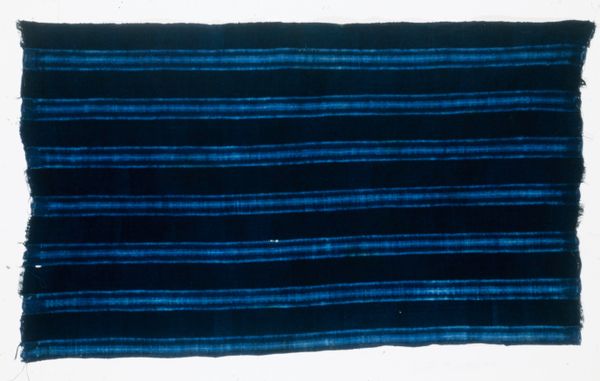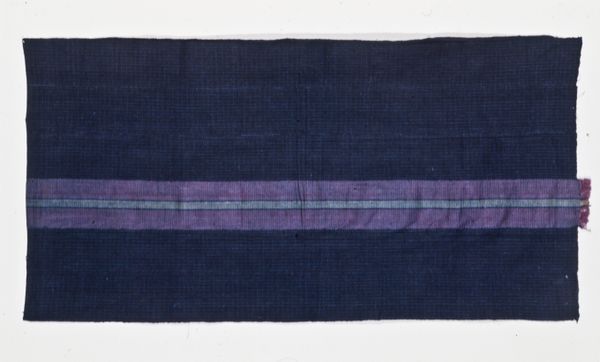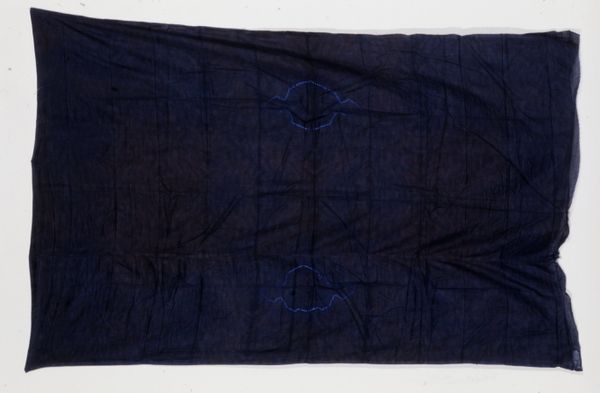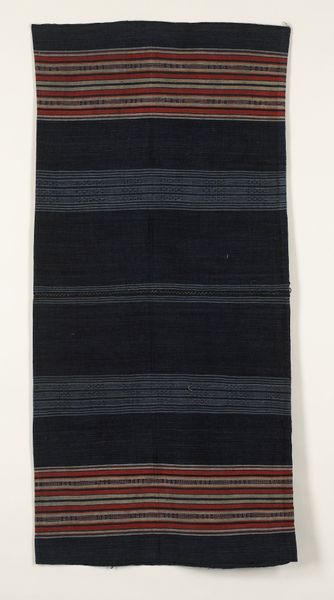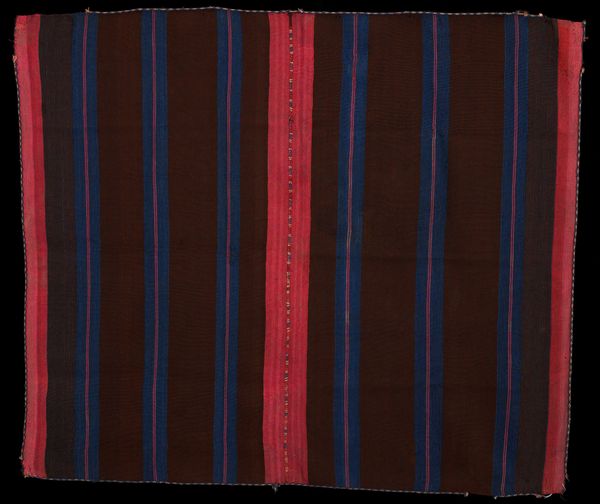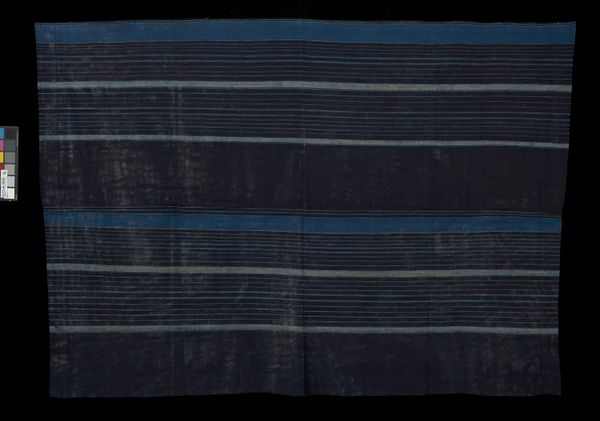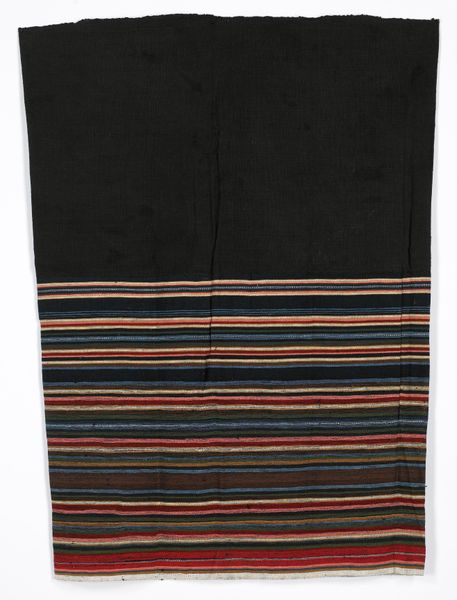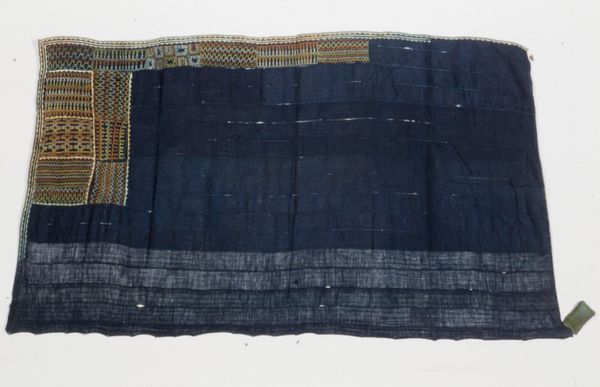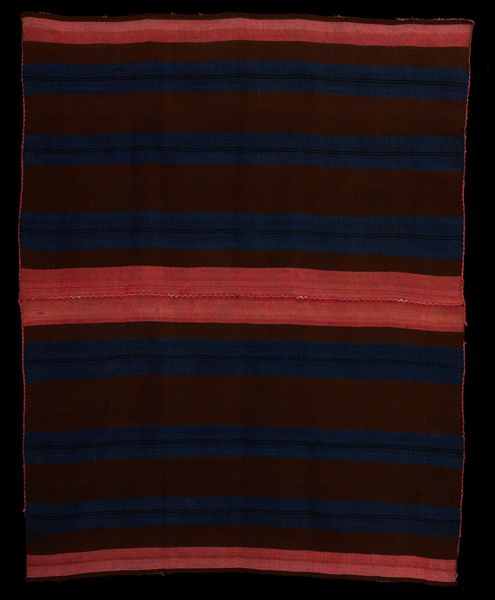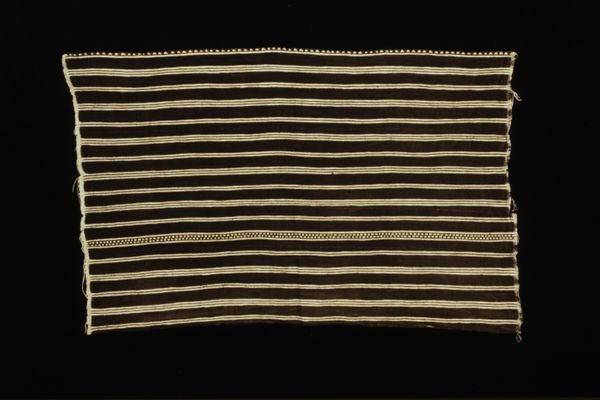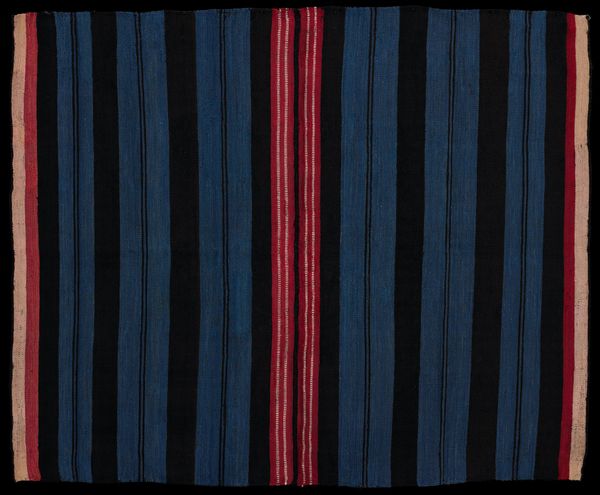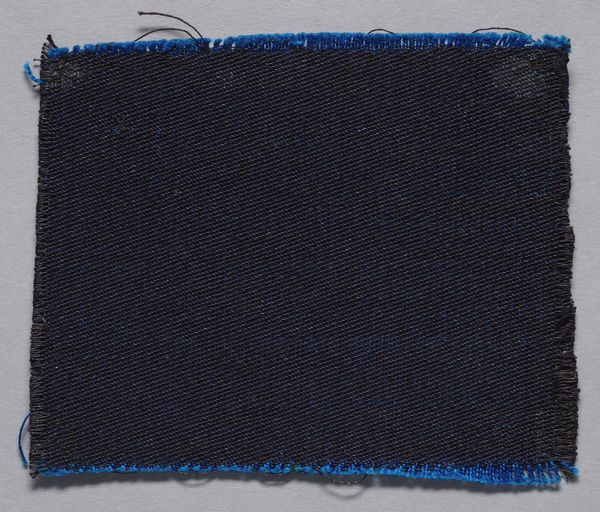
drawing, textile, cotton
#
african-art
#
drawing
#
textile
#
line
#
cotton
#
imprinted textile
Dimensions: 63.5 x 39.5 in. (161.3 x 100.3 cm)
Copyright: Public Domain
Curator: Welcome. Here we have a textile piece titled "Woman's Skirt Length," attributed to the Dogon people, and likely dating from the 20th century. It's a cotton textile, defined by these remarkable lines. Editor: My first impression is of understated elegance. It’s beautiful in its simplicity. The deep indigo color, paired with the rhythmic lines, gives it a very calming presence. What's the context here? Curator: Dogon textiles such as this had deep significance. Woven and dyed primarily by women, the skirt lengths were indicators of status, but also important ceremonial cloths, central to rites of passage. They are not just visually appealing objects, they represent lived experiences, gender roles and social hierarchies within Dogon society. Editor: Thinking about those rites of passage… what does it tell us that such personal experiences were literally woven into cloth? Is the weaving an act of memorializing female experiences that might otherwise go unrecorded? It's incredibly powerful to imagine women’s narratives embedded within the indigo dye. Curator: Absolutely. We need to remember the social dimensions in art historical discourse. Indigo itself also held meaning. This was often connected with funerary traditions. These cloths went beyond fashion, performing rituals connecting to the life cycle and cosmic order. The practice became a marker of cultural identity, deeply intertwined with the status and symbolism of female contributions to their society. Editor: Given that textiles are so intertwined with domesticity and ‘women’s work,’ is it revolutionary to see these patterns elevated in a museum setting? Does this shift how we perceive and value these forms of artistic labor? Curator: Museums have the duty to disrupt preconceived ideas on gender, work and artistic legacy, bringing objects from domestic to public space. It encourages dialogue. Textiles as objects, when carefully studied, can open critical reflection, revealing layers on culture. The transformation is also inherently political. Editor: Definitely. "Woman's Skirt Length," becomes less about the object itself, and more about honoring narratives often erased or underestimated within conventional artistic narratives. Thank you for that insight. Curator: It has been my pleasure. Hopefully it will change perspectives on how textiles become agents of collective memories, holding multiple significance from Dogon cosmology to current debates about value in art institutions.
Comments
No comments
Be the first to comment and join the conversation on the ultimate creative platform.
